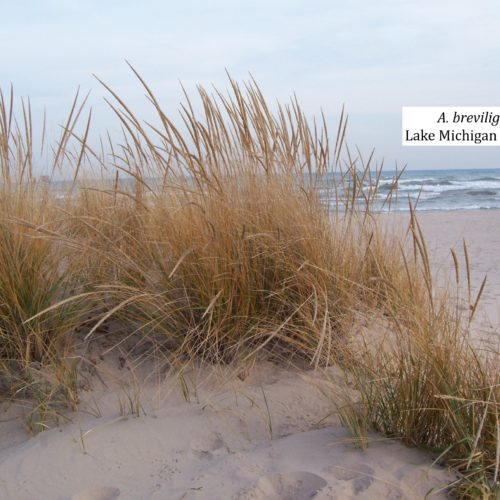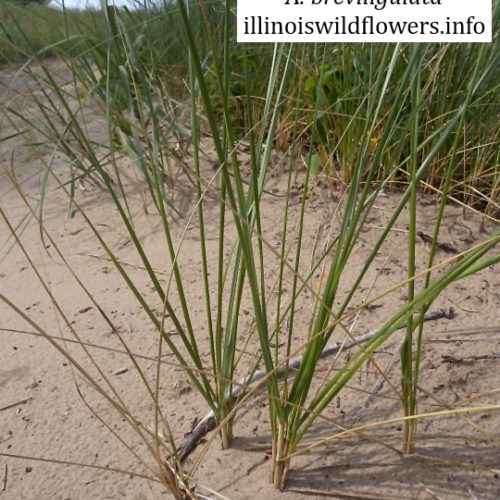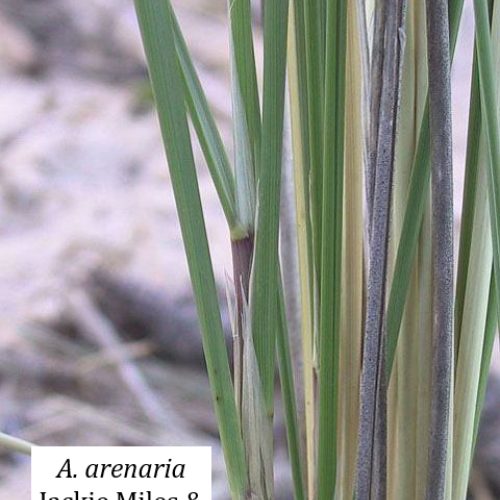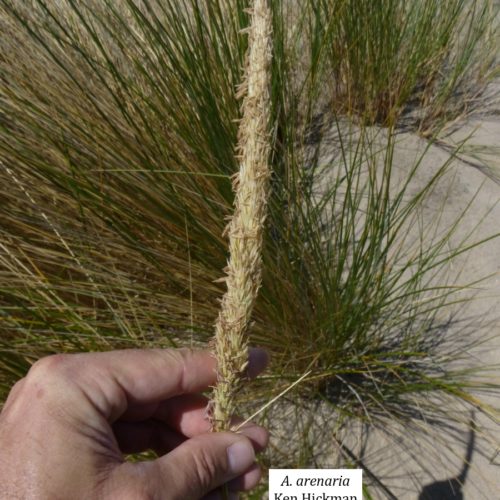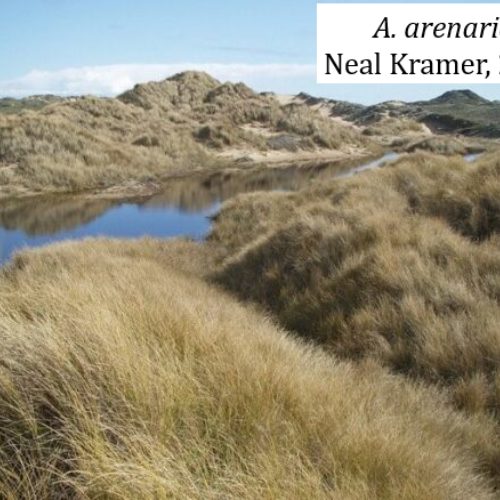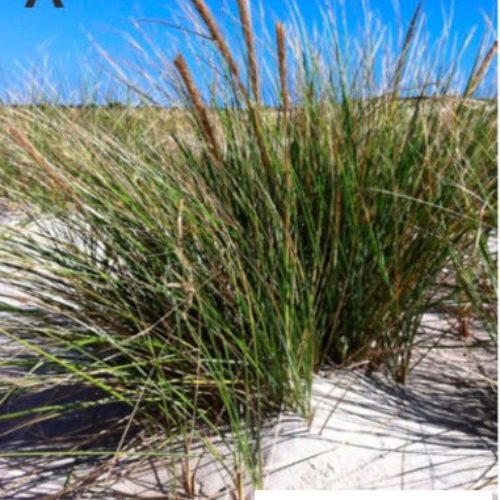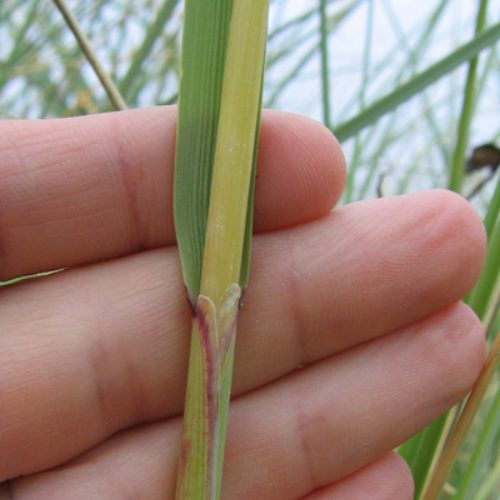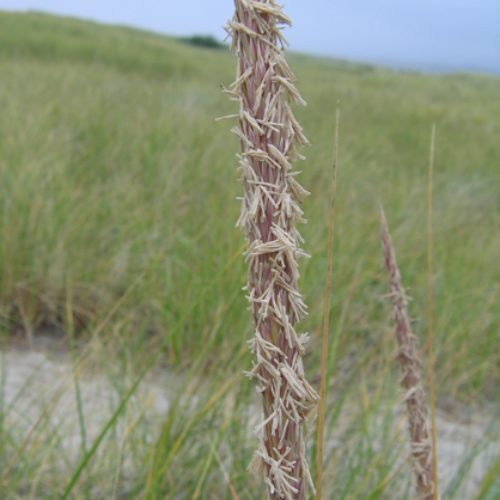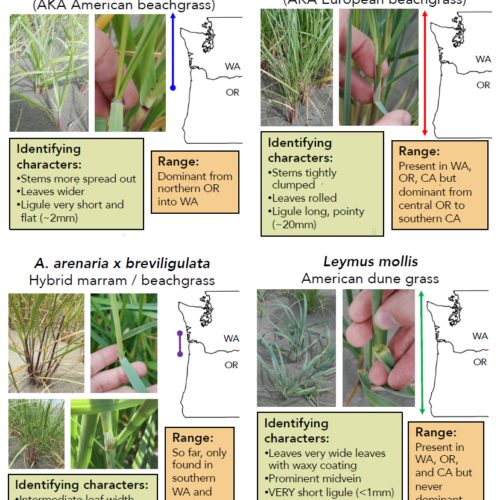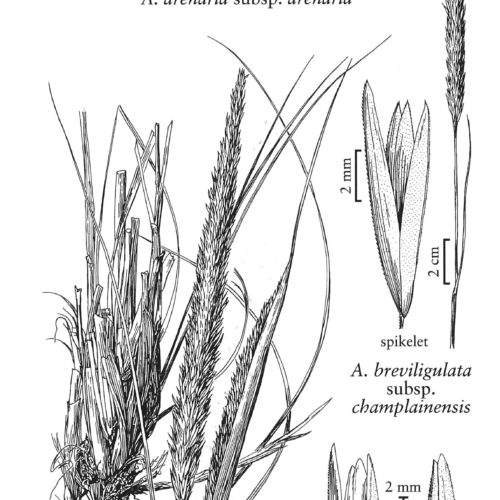Beach grass, American, European, and hybrid
Ammophila breviligulata, A. arenaria, A. breviligulata x A. arenaria

Family: Poaceae
Other Scientific Names:
Calamagrostis breviligulata, Calamagrostis arenaria, Ammophila arenaria var. breviligulata, Ammophila arenaria subsp. breviligulata, Ammophila breviligulata, Ammophila arenaria, Ammophila breviligulata x Ammophila arenaria
Other Common Names: American beachgrass, European beachgrass, hybrid beachgrass, North American marram grass, European marram grass
Weed class: C
Year Listed: 2024
Native to: European beach grass (Ammophila arenaria) is native to the banks of the coasts, lakes, and rivers of Europe, the Mediterranean, and Eurasia. American beach grass (Arenaria breviligulata) is native to the East Coast North America along the Atlantic from North Carolina to Newfoundland, and inland through the Great Lakes.
Is this Weed Toxic?:
Non known to be.
Why Is It a Noxious Weed?
Non-native beach grasses push out all native coastal sand dune plant species. They create larger and more permanent sand dunes than native dune plants would, which permanently change the hydrology and ecology of the habitat behind the dunes. Beach grasses are very prone to wildfires.
Non-native beach grasses were planted to hold sand and protect infrastructure along the West Coast of North America. Due to this important role, these beach grasses are Class C, meaning they are not required for control, so agencies, municipalities, and individuals can choose to leave beach grasses on their properties, to protect from wave action, storms, blowing sand, and shifting dunes.
How would I identify it?
General Description
Flowering stems can grow over a meter tall, while the grass blades are shorter. They grow in large tussocks and bunches, which can spread over an entire dune or beach.
Flower Description
Beach grasses do not frequently make inflorescences. When they do, the panicle can be up to 7 inches long, made up of many small spikelets, each with one floret.
Leaf description
Long, thin, grey-green grass blades, which can be almost 3 feet long. In the winter, they turn brown and die back into flattened mats, which are usually buried by sand.
Stem description
The round, thin, flowering stem can be up to a meter long, and drooping with the weight of the inflorescence spike.
Fruit Seed Description
Brown, oval-shaped, and fall off the grass while still enclosed by a hard shell. Plants make very few seeds compared to the number of florets
May Be Confused With
The only native dune grass to Washington is the American dune grass, Leymus mollis. You can use the following resources to differentiate between our native dune grass and the invasive beach grasses:
Where does it grow?
Sand dunes on the coasts of salt and fresh water. Mostly known along the Pacific coast of Washington, though there are sand dunes they can grow on in Puget Sound and other locations around Washington and the Columbia River. Click here to see a county-level distribution of beach grasses in Washington.
How Does it Reproduce?
Beach grasses reproduce primarily by underground rhizomatous spread, as well as cloning when bunches break off with wave action and float to a new site.
Beach grasses can reproduce by seed, which is spread on the wind.
How Do I Control It?
Manual:
Hand pulling and digging can be effective, but time consuming.
Heavy machinery, like bulldozers can be used, especially in conjunction with manual and chemical controls.
Cultural:
Controlled burns, in tandem with manual or chemical methods can be effective.
The army corps of engineers have had success with spraying salt water on beachgrass until salinity rises above 2%.
Chemical:
Glyphosate with a non-ionic surfactant is effective with follow up treatments. Imazapyr is preferred over glyphosate.
For More Information
Our written findings on European, American, and hybrid beach grasses


